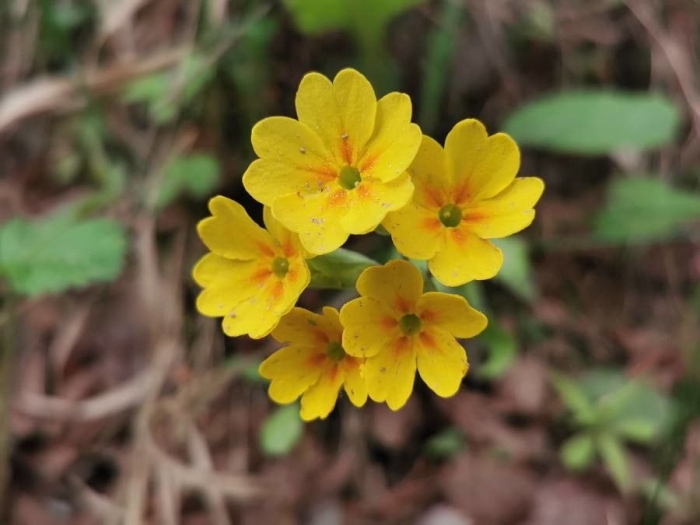Cowslip Primrose
(Primula veris)
Cowslip Primrose (Primula veris)
/
/

Ana C
CC BY-SA 4.0





















































Estimated Native Range
Summary
Cowslip Primrose is valued for its early spring flowers, which add a splash of color to gardens when few other plants are in bloom. It is often used in woodland gardens, rock gardens, and as an underplanting for deciduous trees. This plant is relatively low-maintenance, requiring only part shade and medium amounts of water, with a preference for well-drained soils. While it is not particularly prone to diseases, slugs and snails can sometimes be a problem. It is important to note that while red- and orange-flowered variants can occur, these are often the result of cross-pollination with colored primula hybrids and may not breed true.CC BY-SA 4.0
Plant Description
- Plant Type: Herb
- Height: 0.5-0.8 feet
- Width: 0.3-0.5 feet
- Growth Rate: Moderate
- Flower Color: Yellow
- Flowering Season: Spring
- Leaf Retention: Semi-Deciduous
Growth Requirements
- Sun: Part Shade
- Water: Medium
- Drainage: Medium
Common Uses
Bank Stabilization, Bee Garden, Bird Garden, Border Plant, Butterfly Garden, Deer Resistant, Edible*Disclaimer: Easyscape's listed plant edibility is for informational use. Always verify the safety and proper identification of any plant before consumption., Fragrant, Groundcover, Hummingbird Garden, Low Maintenance, Rabbit Resistant, Rock Garden, Salt Tolerant, Showy Flowers
Natural Habitat
Native to open grasslands, deciduous forests, and scrublands across Europe and Siberia
Other Names
Common Names: Cowslip, Briallen Fair, Common Cowslip, Hulkravet Kodriver, Echte Schlüsselblume, Frühlingsschlüsselblume, Wiesen-Schlüsselblume, Primevère Officinale, Bainne Bó Bleachtáin, Marianøkleblom
Scientific Names: , Primula veris, Primula officinalis var. canescens, Primula canescens, Primula montana, Primula discolor, Pinguicula suaveolens, Primula cordifolia, Primula lasiopetala, Primula praticola
GBIF Accepted Name: Primula veris L.